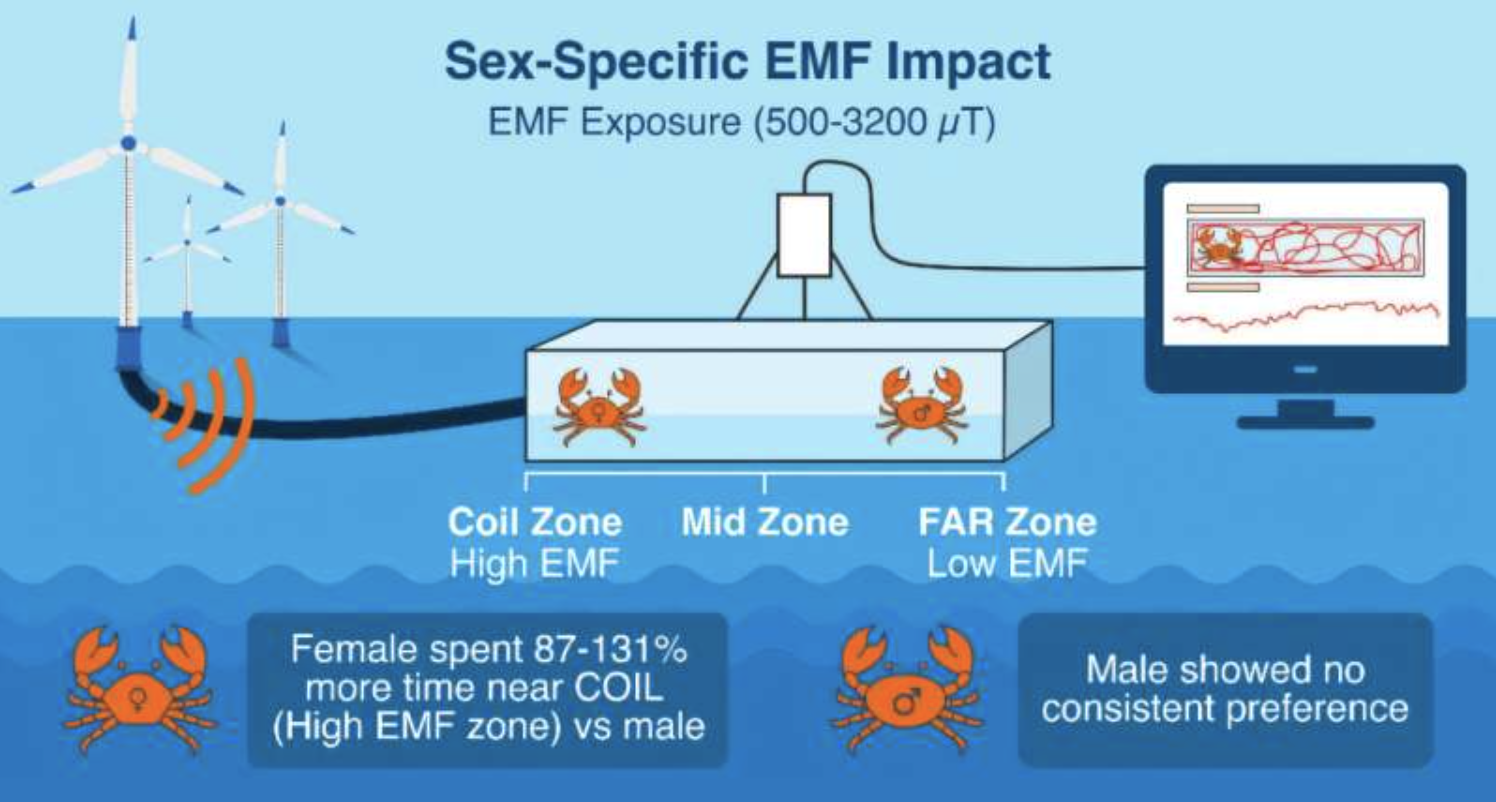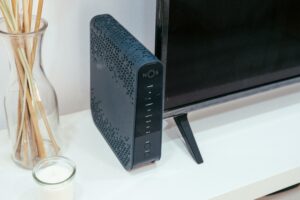We hear plenty about electromagnetic field (EMF) exposure and its potential effects on humans, especially when it comes to our kids and their devices. But here’s what most people don’t know: humans aren’t the only ones affected by EMF exposure.
Recent research reveals that creatures at the bottom of the ocean are responding to electromagnetic fields in ways that could ripple through the entire food chain. And eventually? Those ripples reach us.
Female Crabs Show Surprising Sensitivity to Underwater EMF
Scientists at the University of Portsmouth just published a groundbreaking study about underwater power cables from offshore wind farms. The focus? How these cables affect crabs. The findings are eye-opening.
Female crabs show significantly greater sensitivity to electromagnetic fields from underwater power cables than males. We’re not talking about minor differences. Female crabs were almost twice as likely to stay near areas with electromagnetic fields, spending between 87 and 131 percent more time there compared to areas without EMFs. Male crabs? They went about their business as usual.
Why Ocean EMF Exposure Affects the Entire Food Chain
Millions of crabs migrate along coastlines each year to reproduce. When electromagnetic fields disrupt these patterns, the consequences extend far beyond crabs themselves.
Female crabs getting “stuck” near underwater cables can’t complete their natural migrations. This means they might not reach the right locations to lay their eggs. Population levels drop. Breeding success declines. The entire ecosystem that depends on these creatures suffers.
The amount female crabs moved was reduced by more than a third (38 percent) at moderate field strengths. Imagine if something invisible in your environment made you 38% less mobile. That’s significant.
Real-World EMF Levels, Real-World Consequences
What makes this research particularly compelling? Female crabs were affected by magnetic field strengths from subsea power cables found in real ocean environments, not just artificially high levels in labs.
This isn’t some extreme scenario that would never happen in nature. These are actual EMF levels present near underwater cables powering offshore wind farms right now. There were even noticeable effects at low EMF levels below 250 μT.
While underwater cables will cover less than 0.1 percent of the ocean floor by 2050, they could still cause major problems if they’re placed in the wrong spots—like along routes where crabs migrate to breed.
Sex-Specific Responses to EMF Challenge What We Know
Researcher Elizabeth James put it clearly: “This is the first study to demonstrate sex-specific responses to submarine power cable electromagnetic fields in crabs”.
Different species respond differently to EMF exposure. Different genders respond differently. Different life stages may all have unique vulnerabilities. What we think we know about electromagnetic fields and their biological effects? It’s just the tip of the iceberg.
Professor Alex Ford noted that with chemical pollutants, sometimes males are more sensitive because females can excrete contaminants with eggs or offspring, but in this instance, the female crabs were more sensitive. The team is exploring whether this might be due to a unique ability to detect electromagnetic fields.
The Marine Food Web Connects to Your Dinner Table
Crabs are part of the ocean food web. They’re prey for fish, birds, and marine mammals. They’re predators of smaller organisms. They’re also part of the human food supply.
When female crabs can’t complete their natural migrations and reproduction is disrupted, those effects don’t stay contained. Consider the cascade: If female crabs are compromised, what happens to the fish that eat crabs? What happens to the fisheries that depend on healthy crab populations? What happens to coastal communities whose economies rely on seafood?
What happens to our own dinner tables when these marine populations decline?
Renewable Energy Solutions Need Smarter Implementation
Professor Ford stated: “As we rapidly expand offshore renewable energy to meet climate targets, we need to ensure we’re not inadvertently creating new environmental problems while solving others”.
This isn’t about being anti-renewable energy. We desperately need clean energy solutions. But we can’t assume our solutions are without consequences. We need to be smarter about how and where we implement these technologies.
EMF Exposure: More Than a Human Health Issue
The takeaway isn’t to panic. It’s to pay attention.
If female crabs can be so profoundly affected by EMF from underwater cables, what else is being affected that we haven’t studied yet? Other marine species? Organisms in different life stages? What about cumulative effects over generations?
This research shows that EMF exposure isn’t just a human health concern. It’s an environmental concern. An ecological concern. A food security concern. Everything is connected.
Understanding the Full Impact of Electromagnetic Fields
When we discuss EMF exposure, the conversation usually focuses on cell phones, WiFi routers, and smart devices in our homes. Those conversations matter. But this crab study reminds us that electromagnetic fields are affecting life at every level.
From the ocean floor to the food chain to the ecosystems that sustain us all—nothing exists in isolation.
The Question Every Parent Should Consider
If female crabs are this sensitive to underwater EMF, compromising their ability to migrate and reproduce, where do the dominoes land?
What other species are affected in ways we haven’t discovered yet? How many dominoes have to fall before we see the effects on our own tables, our own health, our own children’s future?
This isn’t about having all the answers. It’s about asking better questions. It’s about demanding more research before we assume that invisible exposures are harmless—whether in our oceans or in our homes.
The crabs are showing us something important. Are we paying attention?
Image Credit: Environmental Science & Technology Letters (2025). DOI: 10.1021/acs.estlett.5c00862







